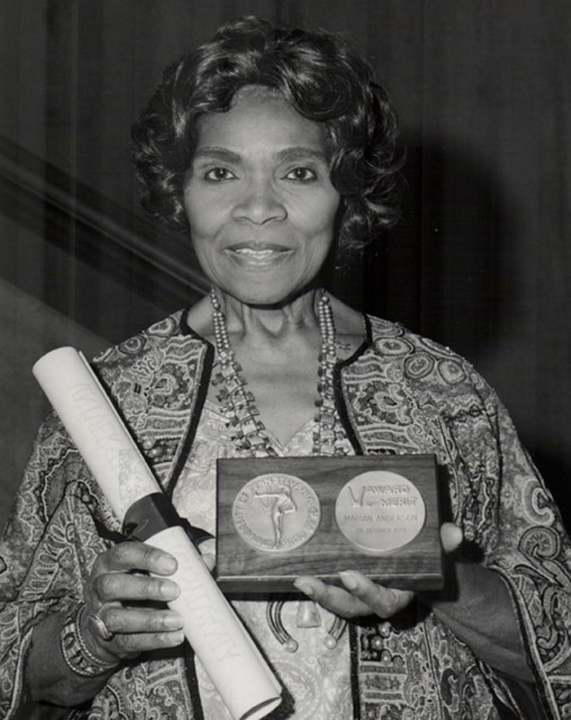Source: Wikimedia Commons
The legendary contralto, Marian Anderson, graced stages worldwide with her powerful voice. Yet, her story intertwines deeply with the Philadelphia Orchestra, revealing a complex narrative of artistic excellence overshadowed by racial prejudice. This is a tale of resilience, artistic defiance, and the eventual triumph of a remarkable artist.
Denied Opportunity, Embraced Europe:
Born in Philadelphia in 1897, Anderson’s exceptional talent was evident early on. However, the shadow of racial segregation loomed large. She was denied admission to the Philadelphia Musical Academy, a stark reminder of the systemic barriers Black artists faced.
Undeterred, Anderson found a path forward in Europe. There, her talent was recognized, and she established a flourishing career. In 1925, she became the first Black American to perform with the New York Philharmonic, a testament to her undeniable artistry.
A City Divided: The Daughters of the American Revolution (DAR) Incident
Anderson’s return to the United States in 1939 was met with a national controversy. The Daughters of the American Revolution (DAR) refused to allow her to perform at Constitution Hall, a venue they owned. This incident ignited a national outcry, highlighting the deeply ingrained racism in American society.

Image Source: Flickr | University of Pennsylvania
Mrs. Roosevelt and the Lincoln Memorial Steps:
First Lady Eleanor Roosevelt, a staunch advocate for racial equality, intervened. She arranged for Anderson to perform a free concert on the steps of the Lincoln Memorial on Easter Sunday, 1939. An estimated 75,000 people attended, with millions more listening on the radio. This decisive moment transcended a mere concert; it became a symbolic victory for the Civil Rights Movement.
A Philadelphia Connection: Collaboration and Recognition
While the DAR incident cast a shadow, Anderson’s relationship with the Philadelphia Orchestra wasn’t solely defined by this event. Interestingly, she had a history of successful collaborations with the orchestra, performing twelve times between 1937 and 1957.
One notable collaboration was with conductor Eugene Ormandy. Their 1940 recording of arias by Brahms and Richard Strauss remains a testament to their artistic chemistry.

Source: Wikimedia Commons
A Legacy of Change: From Segregation to Celebration
Marian Anderson’s perseverance in the face of prejudice paved the way for future generations of Black artists. The Philadelphia Orchestra, acknowledging the significance of her contributions, recently renamed their home venue “Marian Anderson Hall” in 2024. This act is a powerful symbol of how the institution has grappled with its past and celebrates the legacy of a true musical pioneer.
Beyond the Stage: A Voice for Equality
Anderson’s influence extended far beyond the concert hall. She became a prominent figure in the Civil Rights Movement, using her platform to advocate for social justice. She served as a delegate to the United Nations and a Goodwill Ambassador for the United States, promoting cultural understanding through music.
Marian Anderson’s story is an exceptional blend of artistic brilliance and unwavering determination. Her fight against racial barriers not only opened doors for her career but also inspired countless others. The Philadelphia Orchestra’s decision to honor her by renaming their hall signifies a commitment to inclusivity and a celebration of the transformative power of music.

Anand Subramanian is a freelance photographer and content writer based out of Tamil Nadu, India. Having a background in Engineering always made him curious about life on the other side of the spectrum. He leapt forward towards the Photography life and never looked back. Specializing in Documentary and Portrait photography gave him an up-close and personal view into the complexities of human beings and those experiences helped him branch out from visual to words. Today he is mentoring passionate photographers and writing about the different dimensions of the art world.





